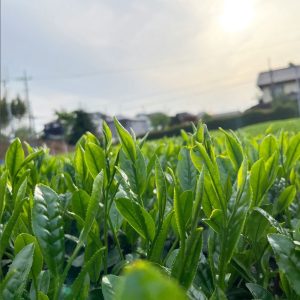
Kirari 31 (きらり31) is a cultivar that not only makes a high quality sencha, but also kabusecha and gyokuro.
Kirari means “momentary flash of light”.
The number 31 is a play of words. 3 is pronounced “san” in Japanese, and because of the way it sounds it refers to the sun.
And the number 1 comes from the word ippai (一杯), meaning a lot, or full.
Hence, the name suggests a cultivar that receives a lot of sunshine.
History of Kirari 31
in 1994, at the tea industry branch of Miyazaki prefecture agricultural experimental site, Sakimidori was crossed with Saemidori.
Then the best seedling was selected.
After undergoing tests in 1999 and 2004, it was registered in 2016 as Kirari 31 under the Seed and seedling law.
Characteristics of Kirari 31
Young leaves of Kirari 31 have a long elliptical shape.
Their size and thickness are about the same as Yabukita.
They have a green color similar to Yabukita, with some luster, and are slightly soft.
The mature leaves of this cultivar have a similar shape as the young leaves, but are bigger than Yabukita.
However, these green leaves with luster are somewhat thin.
Kirari 31 is an early budding cultivar. It can be harvested 3 days earlier than Yabukita.
This cultivar is resistant to cold weather, and offers a high yield at harvest.
It is strong against the gray blight, but weak against anthracnose, bacterial shoot blight, blister blight and the white peach scale.
As a sencha, the leaves have a bright green color.
The aroma has notes of peach and chestnut.
This cultivar has a a high concentration of amino acids, so this results in an intense umami taste.
Furthermore, the taste is refreshing and low in astringency and bitterness.
